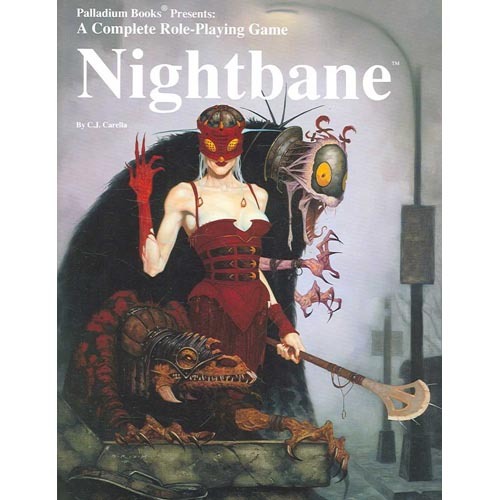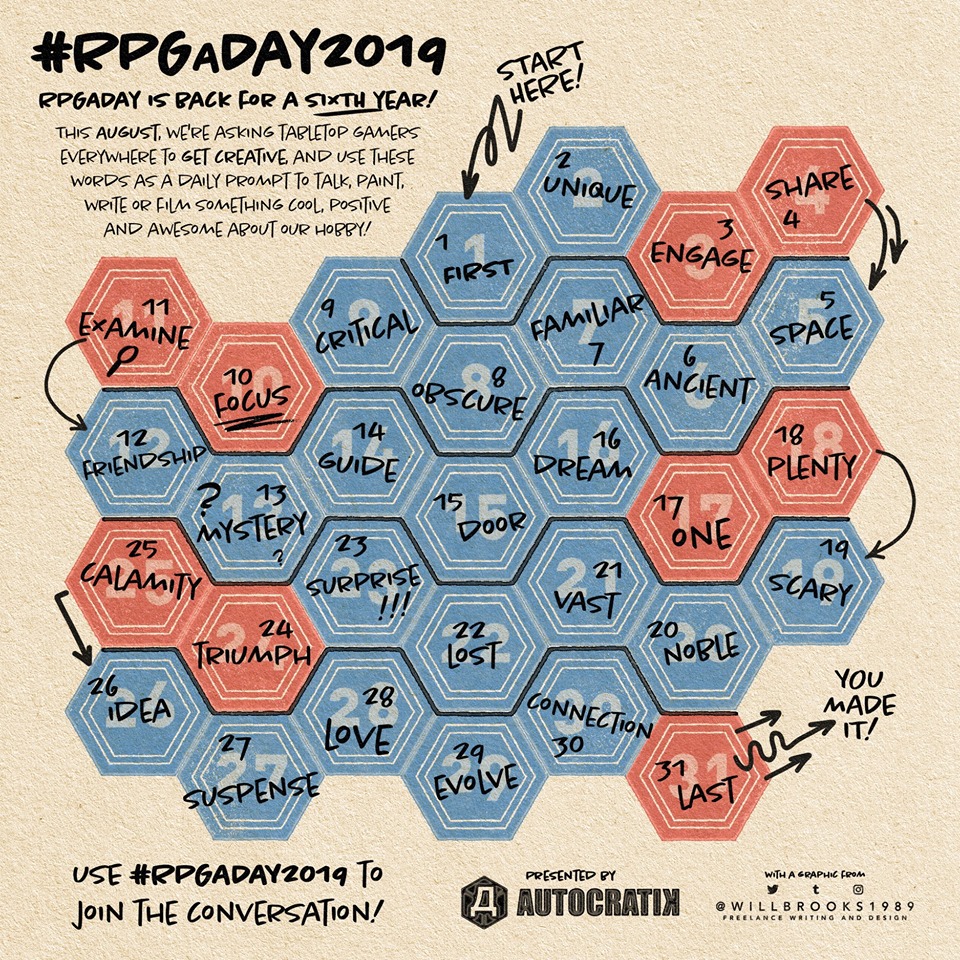My favorite Palladium game over all is Nightbane by C J Carella who went on to do Armageddon and Witchcraft as well as other urban fantasy type games, before publishing indie fiction. Nightbane is Palladiums mid–90s entry into the playing a monster genre. In this case, most players are the titular nightbane (originally nightspawn until a dispute with Todd McFarlane proving Kevin Siembieda isnt the only one overly anxious about IP) who are people who transform into monstrous forms with superpowers. My elevator pitch would be, “what if instead of mutants the X-Men were the lead of Kafka’s Metamorphosis“. The later is even mentioned in the game’s setup.

Carella wrote two supplements before moving on from Palladium. The first, Between the Shadows introduced that standard of all urban fantasy, and most fantasy, fiction and games, a dream plane. This particular version is called The Dreamscape. It has most of the expected attributes. Anything that dreams has a presence there. You can die there. Special magical abilities, places, and devices allow you to enter it while conscious. There is the expected class of magic-user whose spells center on dreams.
The interesting idea I have only seen here is Dream Blindness. When a character enters the Dreamscape as a conscious person for the first time they have to make a saving throw. If they fail they are dream blind which is similar to actual dreaming. Instead of seeing their surroundings they see the contents of their subconscious. Individuals near the dream blind can see these images swirling around them.
The effect can last up to 30 minutes, but will end in five or six minutes in the normal case. The person can also be slapped out of it. Future trips increase resistance to dream blindness.

The experience can be pleasant or unpleasant. It all depends on the dream. The book did not include a generator for the visions in dream blindness, but you can find them on the web. If I get to run Nightbane, I would probably work up a campaign specific table using reoccurring symbols from the game and my campaign.
The whole concept is discussed in a couple of paragraphs, which is a shame as it is a very interesting idea.
The book also includes extensive discussion of running adventures in the Dreamstream that could easily be used in other games. There are factions and domains described. Two characters classes centered on dreams are described. The Dream Makers are powerful psychics who often style themselves the rulers of the Dreamstream. They can bodily enter into the Dreamstream as well as the traditional psychic entry. Dream Dancers are also psychics who lack some of the large scale powers of the Dream Makers, but have great control of their form in the Dreamstream.
Dreaming in Nightbane is a fascinating activity.


I’ve gotten into the habit of calling clusters of story ideas bunnies, and talking about them as if they have opinions.
They just went ‘Oooh’.
Thanks.